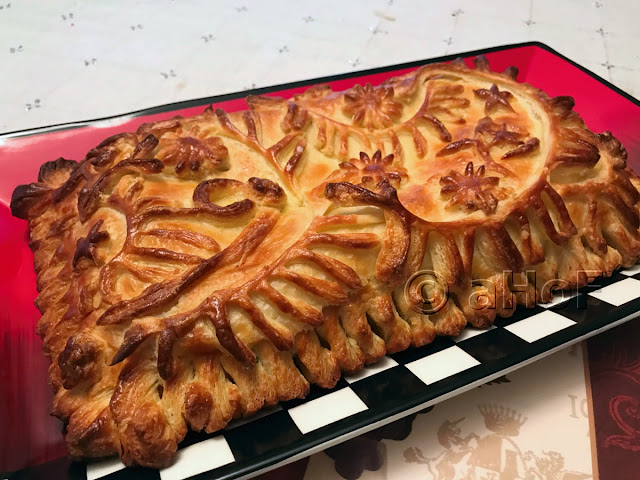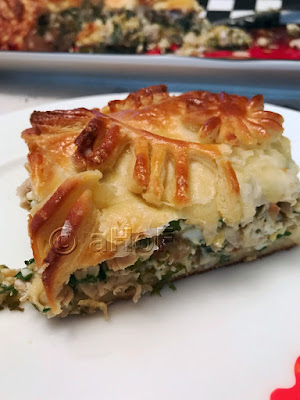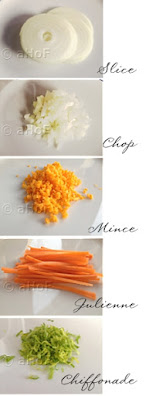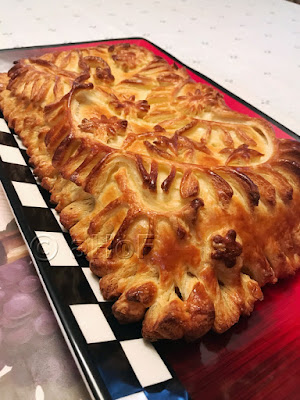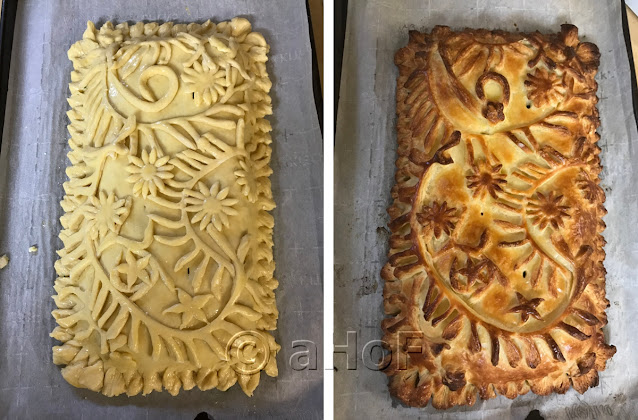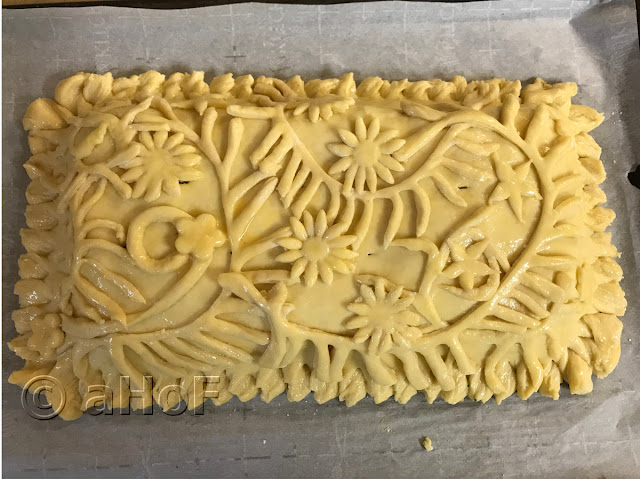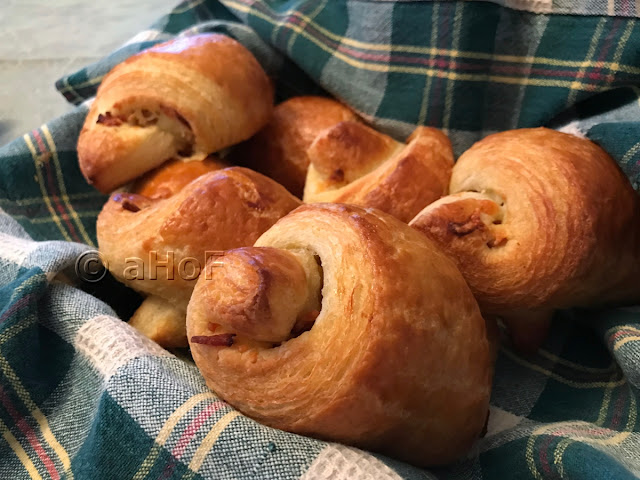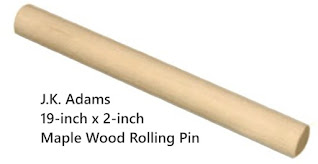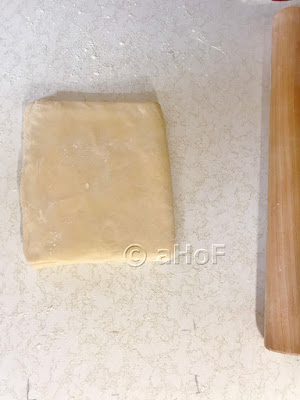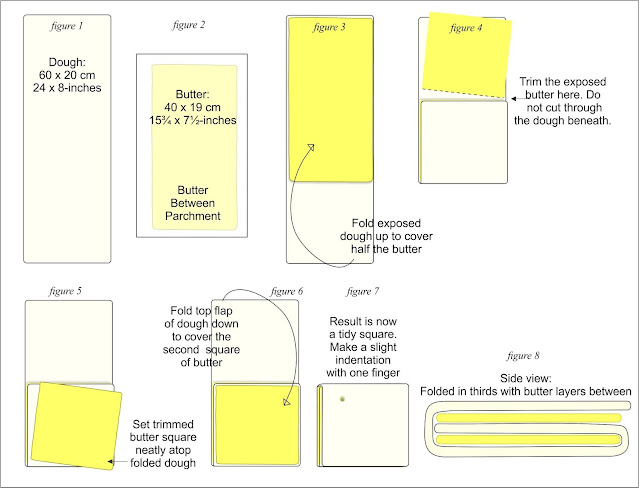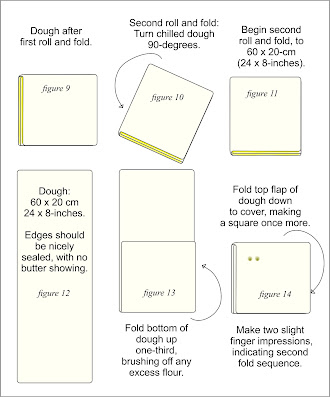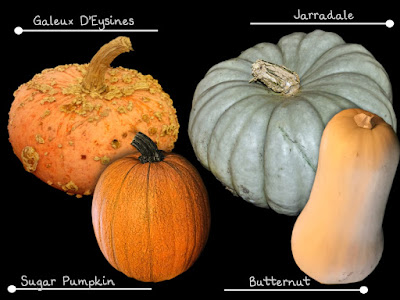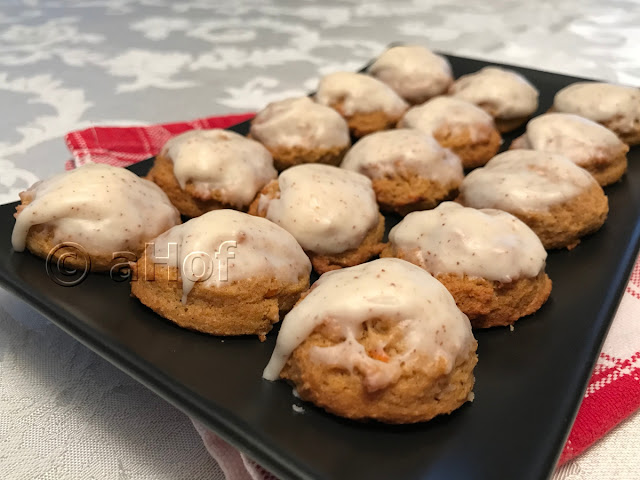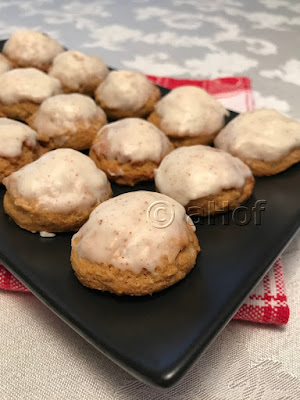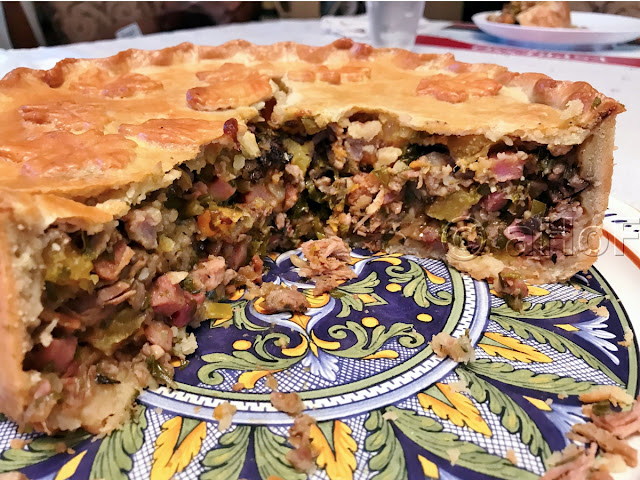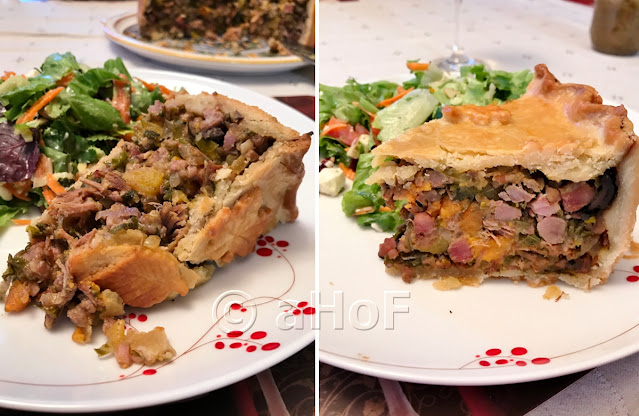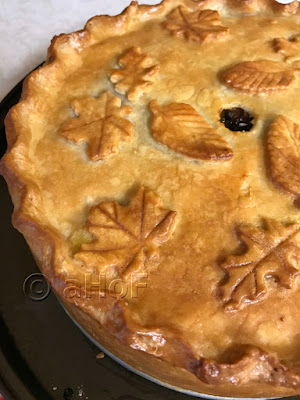The other defining characteristic of a Pain de Campagne is that it uses at least a small amount of whole wheat and/or rye flour along with the white flour. I chose to use rye.
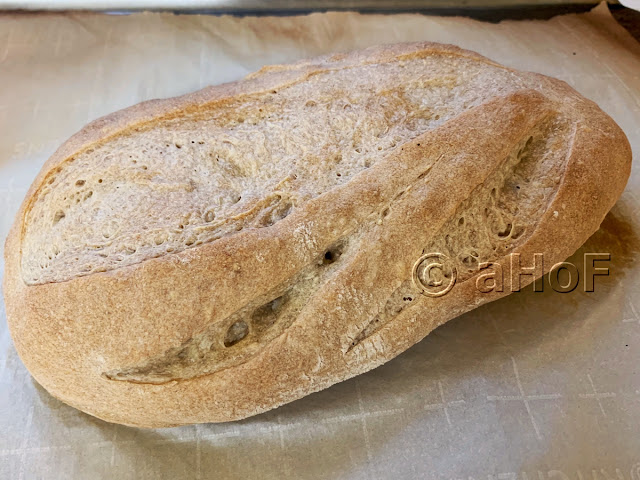 |
| My Pain de Campagne, in loaf form |
What is Pâte Fermentée?
Pâte Fermentée is nothing more than a bread dough, usually a French Bread dough using simply flour, yeast, water and sometimes salt. The mixture can be fermented, then used whole or in part. Part can be made into French bread, and some held back to use as the Pâte Fermentée for another batch of bread, as its starter, or pre-ferment. This can be continued for future loaves, keeping back a piece to be used in the next batch of bread, and so on.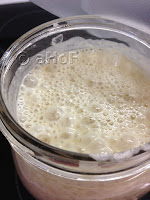 |
| Active Sourdough Starter |
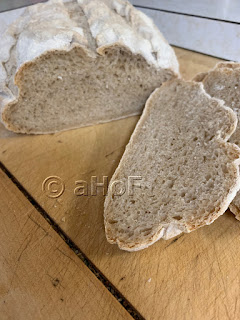 |
| Paul Hollywood Pain de Campagne, crust white |
A possibility, something I just read today in a new book (for me) by Peter Reinhart, called "Whole Grain Breads," is the use of a small amount of ascorbic acid in the problems of no rise at the end of the cycle, or using a bit of diastatic malt powder to help with the not-browning dilemma.
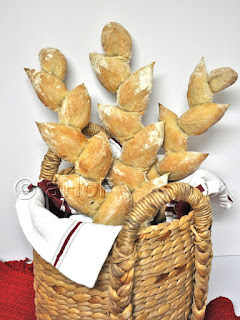 |
| Peter Reinhart Pain de Campagne made as Epi |
Back to my sourdough. Peter Reinhart uses a Pâte Fermentée to make his Pain de Campagne. The issue at hand was to make my sourdough similar in texture to the Pâte Fermentée, which is like an already formed French Bread Dough. It took me a while to calculate what I would do with my starter, as I am not at all conversant with the "Baker's Percentage Formula" Reinhart uses. I do know, however, what a French Bread Dough feels and looks like, so I proceeded.
All in all, my version of a nice, firm starter (simulating a French bread dough) worked perfectly. Once the starter rises, it is placed in the fridge overnight before proceeding, despite having grown. This is so that the starter has a long, chilled rest to develop flavors, which will give the final bread its wonderful flavor. The following day, the firm starter is cut into pieces and set on a surface, covered, to come to room temperature before proceeding with the recipe.
I chose to make half the final dough into a loaf and the other half into the shape of an Épi, which is cut and pulled in opposite directions to simulate wheat. Both the loaf and the Épi came out perfectly, and the flavors are most excellent.
Pain de Campagne
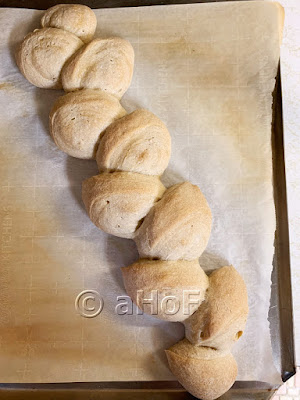 |
| Pain de Campagne as Epi |
Makes 2 loaves
FIRM STARTER:
6 ounces / 171 grams active sourdough starter
4 ounces / 113.5 grams bread flour
4 ounces / 113.5 grams all-purpose flour
¾ teaspoon / 0.15 gram salt
3 ounces / 89 grams water
BREAD DOUGH:
Firm Starter, above - use all
8 ounces / 227 grams bread flour
1.5 ounces / 42 grams whole wheat or rye flour
¾ teaspoon / 0.15 gram salt
¾ teaspoon / 0.11 grams instant yeast
6 ounces / 178 grams water
FIRM STARTER: Make one day ahead. Stir together the active starter and water, then add in the bread flour, all-purpose flour and salt. Stir, then turn out onto a clean surface, oiled with olive oil or cooking spray. Knead the mixture for about 6 minutes, adding more water by very small amounts only if needed to make a firm dough, tacky but not sticky. Place the starter into a greased container, cover and let rise to double, then refrigerate until next day.
BREAD DOUGH: Remove the firm starter from the refrigerator at least one hour before using. Oil a surface and cut the starter into about 10 to 12 pieces, setting on the oiled surface. Cover with plastic film and allow to come to room temperature.
In a large bowl, combine the starter pieces with the flours, salt and yeast. Add in the water, mixing with a spoon or with a heavy duty mixer to bring together. Add a few more drops of water only if needed to make the dough firm but not hard. If kneading by machine, do so for about 8 minutes. If kneading by hand, do this for 8 to 10 minutes, until the dough is smooth and pliable, firm but not hard, and just tacky to the touch.
Place the dough into an oiled bowl, turning once to coat all sides. Cover with plastic film or a towel and proof at room temperature for about 2 hours, or until doubled. Briefly knead the dough right in the bowl, cover and let rise once more until doubled.
Turn the dough out onto a clean, oiled surface and gently cut into two pieces, disturbing as little as possible. Form the pieces into any shape you prefer: a round boule (round loaf) or a bâtard (long loaf), a couronne (crown shape), an épi (sheaf of wheat: see below), or baguette, as desired. Set each loaf onto a baking sheet lined with parchment and strewn with cornmeal.
To make the épi, form the dough into a long and narrow loaf similar to a baguette. Set the loaf onto a baking sheet lined with parchment, then strewn with cornmeal. Using kitchen scissors, snip in at one end, about 2 - 4 inches from the end of the loaf, at an angle, almost, but not quite all the way through. Twist this nearly severed piece to one side. Another 2 to 4 inches along the loaf, snip again at an angle, almost, but not quite all the way through. Twist this piece outwards in the opposite direction. Continue to snip and twist in opposite directions all the length of the loaf.
 |
| How to Make an Épi |
Mist the tops of the loaves with spray oil, then cover and let rise for about an hour, just to about half again their size, or 1½ times.
Preheat the oven to 500 degrees. Have a rack on the highest shelf with an oven safe low pan in place (for hot water). Have the other rack at the second level up from bottom. Have ready one cup of boiling water and a spray bottle of water. Wrap a towel around the spray bottle in case of drips. Cold water dripped onto a screaming hot oven door could possibly crack the glass.
Once the oven is heated, place one of the loaves on its baking sheet on the lower rack, then immediately pour the cup of boiling water into the pan on the top shelf. Close the door quickly, then count 30 seconds. Quickly open the oven door and spritz the inside sides of the oven with the spray bottle. Close the door, time for 30 seconds and again spritz the inside of the oven with water. Repeat a third time and once the door is closed, reduce the heat to 450 degrees.
Bake the loaves for 10 minutes, then turn the pan 180 degrees and time for 5 to 15 minutes more, as needed, or until the internal temperature reaches 200 to 205 degrees on an instant read thermometer. The loaves should be browned and have a hollow sound when thumped on the bottom.
Allow the loaves to cool completely before slicing. The baking process continues for a time beyond the final baking time in the oven. Be patient; let the bread cool.
My passion is teaching people how to create a harmony of flavors with their cooking, and passing along my love and joy of food, both simple or exotic, plain or fancy. I continue my journey in ethnic and domestic cuisines, continuing my journey to explore diverse culinary experiences and hopefully to start you on a journey of your own. Join me also at A Harmony of Flavors on Facebook, and Pinterest.


